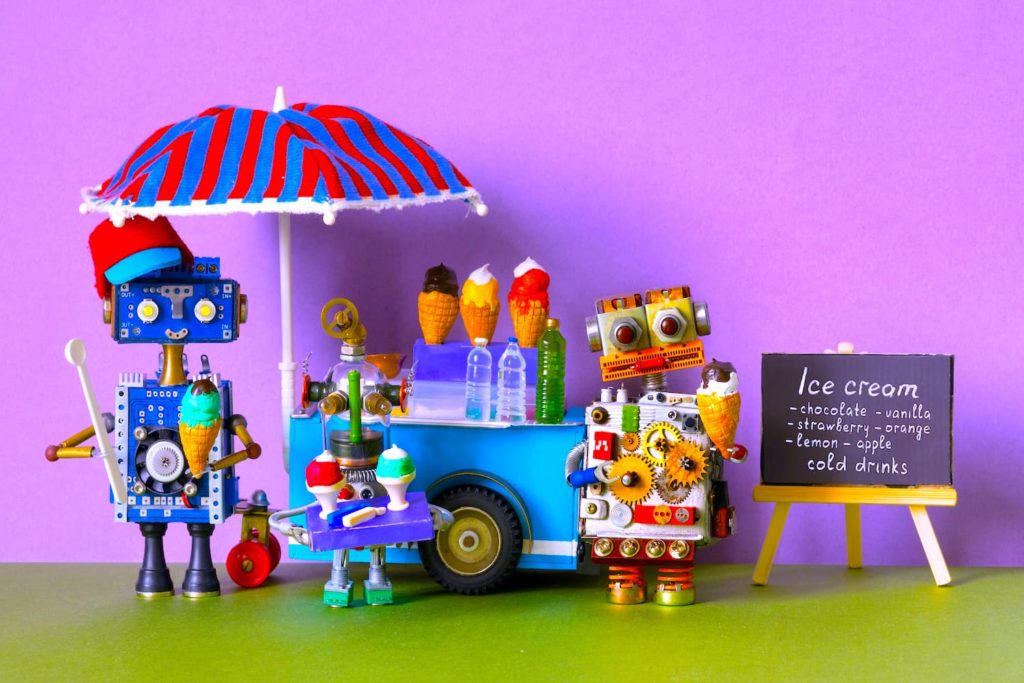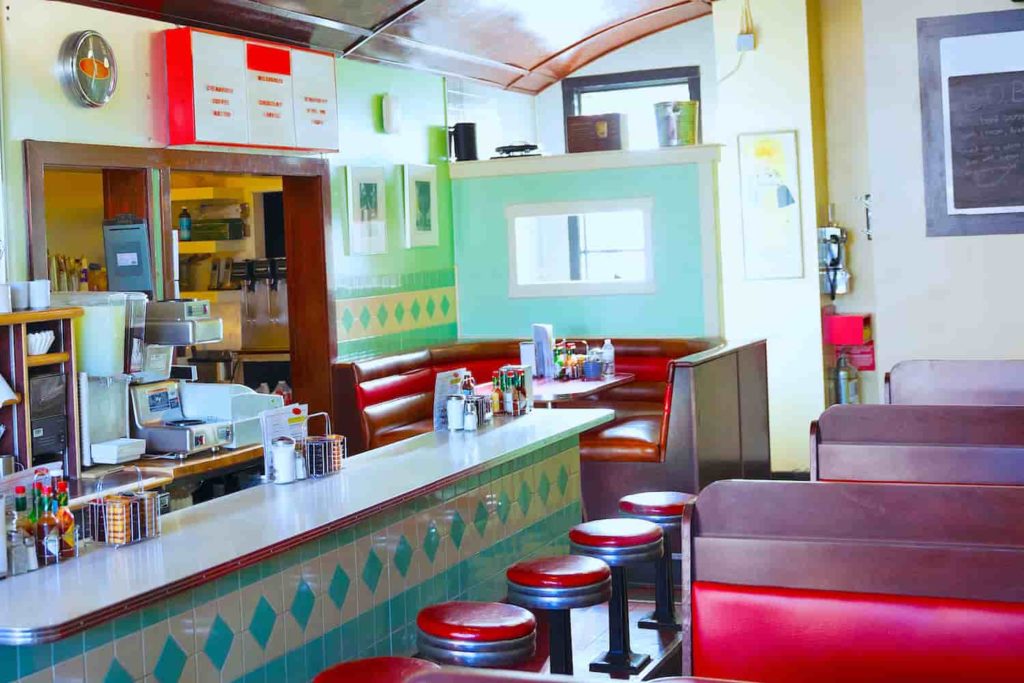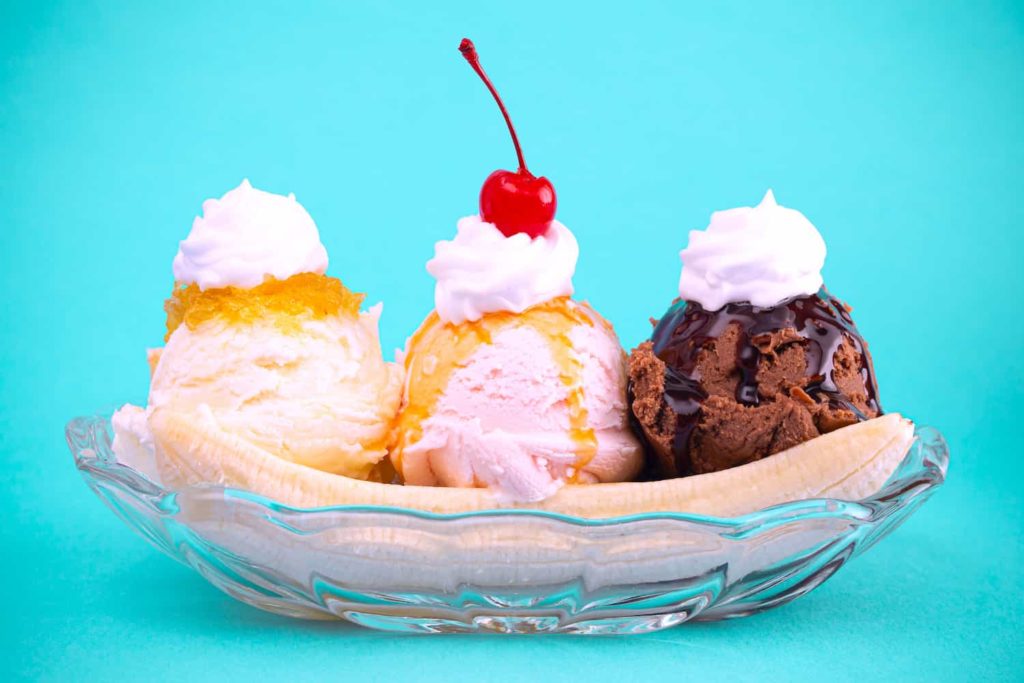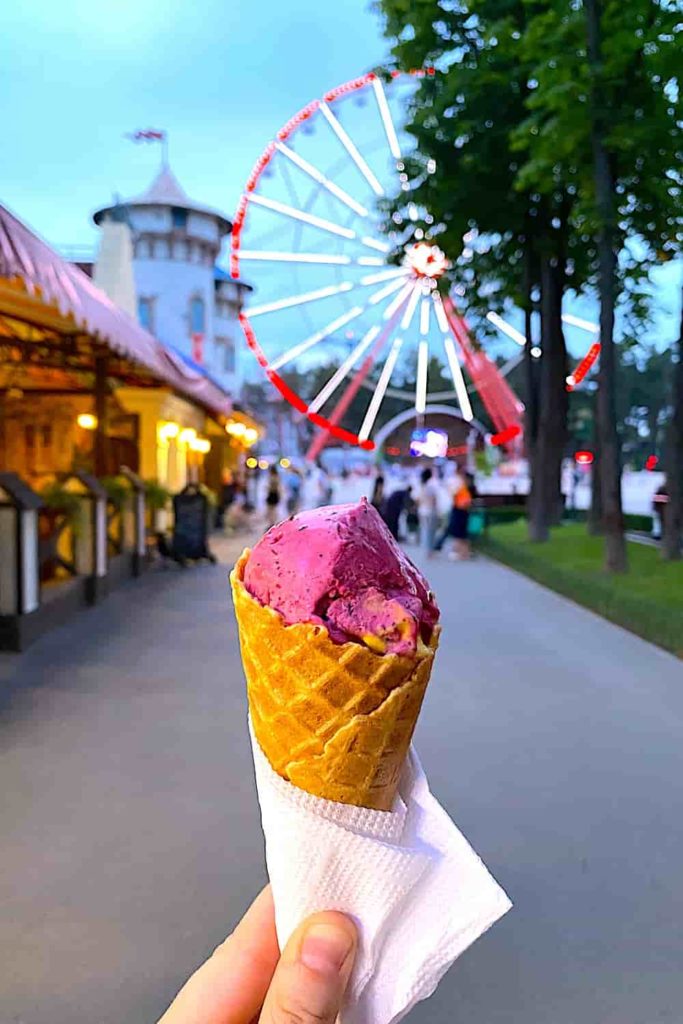
Ice Cream and the Invention of Summer, Part III
Ice cream is the most popular summer dessert. Hot fudge sundaes and root beer floats may fill our individual memories, but they also occupy our collective pop culture past and present. How many scenes from television and films or lines from songs feature ice cream cones or malt shops?
Ice cream is an inescapable part of modern culture and has been a vehicle for creativity for centuries. The first post in this series on ice cream and creativity explored the history of ice cream innovations from ancient times to the twentieth century. The second installment examined flavorings, from the original fruity offerings to the development of the big three (chocolate, vanilla, and strawberry). In both of those posts, we challenged ourselves to be inspired by past creativity so that we might innovate for our own imaginative ice cream present and future.
There are other elements to the ice cream experience that could be considered ancillary, but that are conduits for creativity, nonetheless. These include where we enjoy ice cream, how we handle the ice cream itself, and what we add (sodas, sauces, sprinkles , etc.). This post explores the history of these parts of the ice cream experience and examines how this information can bolster our own creativity with this frosty treat.
The Place to Be
Where we consume ice cream is an essential element of ice cream history. The iconic malt shop is a beloved aspect of 1950s nostalgia, but the history of ice cream establishments stretches back at least a century earlier.
Individual ice cream parlors sprang up in Europe and the Americas in the late eighteenth century, but this type of business didn’t become widespread until the middle of the nineteenth century.
At the same time that ice cream parlors were taking off, drugstores became associated with more than just cough syrups and medicines. In the mid-nineteenth century, people began seeking out sparkling waters for their health benefits. Drugstores became known for carbonated waters or “tonics” with various additives, some medicinal and others just for flavor.

As the twentieth century dawned, ice cream parlors and drugstore soda fountains began to overlap in their offerings. This was due in part to the invention of a hybrid treat. Carbonated beverages with scoops of ice cream became known as ice cream sodas or ice cream floats, which were soon available at both types of establishments.
Ice cream parlors and drugstores with soda fountains became popular places for youth to socialize in the early decades of the twentieth century. During the era of prohibition in the United States, these businesses also filled the socializing void for adults that was created by the displacement of bars, which could no longer serve alcohol.
As sodas became mass produced and large national brands took over, the need for druggists to mix carbonated concoctions waned. Soon the soda fountain disassociated themselves from drugstores in the popular imagination. Ice cream parlors and soda fountains began diversifying their offerings, and many started serving savory items such as hot dogs and hamburgers.
Beyond Sodas and Floats
Sodas and floats weren’t the only ice cream treats sold at ice cream parlors and soda fountains in the early days. Sundaes became another popular ice cream treat, with scoops arranged in a dish and covered with syrups and other toppings. Many places claim to be the birthplace of the sundae, but all of them trace their origins to the 1880s and 90s.
Blended ice cream concoctions would come later, as they were not easily made until the invention of electric blenders. Milkshakes and malted-milk drinks originated at the turn of the twentieth century and soon became a staple of ice cream parlors and soda fountains, which were increasingly known as malt shops.

Malt shops became an aspect of popular culture in the late 1940s and 1950s, but more than that, a featured element of nostalgia for that period. No throwback to the 1950s would be complete without characters sharing a chocolate shake or a banana split at malt shop, diner, or drive-in. We can probably all recall a scene from American Graffiti, Happy Days, or Grease that took place over a burger, fries, and a malted milk.
The development of each different ice cream treat (the float, the sundae, the malt, or the banana split) required imagination. Making a novel combination (in these cases between ice cream and other ingredients) for a productive outcome (a delicious new treat) is the very definition of creativity.
Ice Cream on the Go
In the late nineteenth and early twentieth centuries, ice cream parlors and soda fountains were locales for socializing and consuming frosty treats, but ice cream also hit the road during this period.
The ice cream craze could not be kept indoors. Early entrepreneurs began distributing ice cream on the streets and in public squares at the end of the 1800s. This occurred on both sides of the Atlantic, and mobile ice cream venders (often with carts or wagons) could be found on streets from Rome to Chicago and beyond.
One of problems with mobile ice cream sales was how to serve the product without carting around piles of heavy dishes. Some ice cream carts did serve scoops in glass dishes that had to be returned immediately. Others wrapped small blocks of ice cream in paper. The race was on to develop better and more portable ways of getting the product into the hands of customers.
One solution to the portability issue was the ice cream sandwich, which came into being in the first years of the twentieth century. There were many variations on what served as the “bread” of the sandwich, which kept people’s hands from touching the ice cream directly. These ranged from thin cakes, to wafers or waffles, to cookies.
A close relative of the ice cream sandwich has become the most enduring symbol of ice cream: the cone. Most history books tie the invention of the ice cream cone to the World’s Fair in St. Louis in 1904, although the details of that story are highly contested. Regardless, cone shaped waffles, hardened to a crisp, and filled with scoops of ice cream are now the iconic presentation of ice cream on the go.

Other forms of portable ice cream began to pop up around the country in the decades following the St. Louis World’s Fair. Ice cream bars of the 1920s often consisted of ice cream covered with a hard chocolate coating. Some were covered with nuts, some came on sticks, and still others had coatings of flavors beyond chocolate. The most popular national brand of ice cream bar was Good Humor, the company that would later introduce the motorized ice cream truck.
Sandwiches, cones, and bars were all creative solutions to the problem of getting ice cream into the hands of consumers on the go… without getting too sticky.
Continued Creativity
Creativity has been an essential ingredient in each step of the evolution of ice cream. In the beginning, people experimented with the base ingredients, and then developed new flavors. As the decades progressed, imaginative people developed new presentations of the treat with added ingredients. The places we enjoy ice cream were another vehicle for innovation, and the issue of portability fueled a whole new realm of creativity. Even the way we recreate ice cream nostalgia involves imaginative energy.
But creativity with ice cream has never remained in the past. There are constant frosty innovations that create new fads and sometimes lasting additions to the ice cream landscape. Making iced desserts with yogurt first happened in the Middle Ages, for example, but then resurfaced as one of the most popular trends in frozen confections in the late 1980s and 90s. One of the more recent trends, rolled ice cream, originated in Southeast Asia, and has begun to take off in Europe and the Americas in the last decade.
What will be the next innovation in ice cream? Do you have an idea for a new trend? The only way we will know if your creation will become an enduring element of ice cream history is if you put that creative idea into action.
Wherever and however you like your ice cream, I hope you enjoy your summer, your creativity, your nostalgia, and your frozen treats!